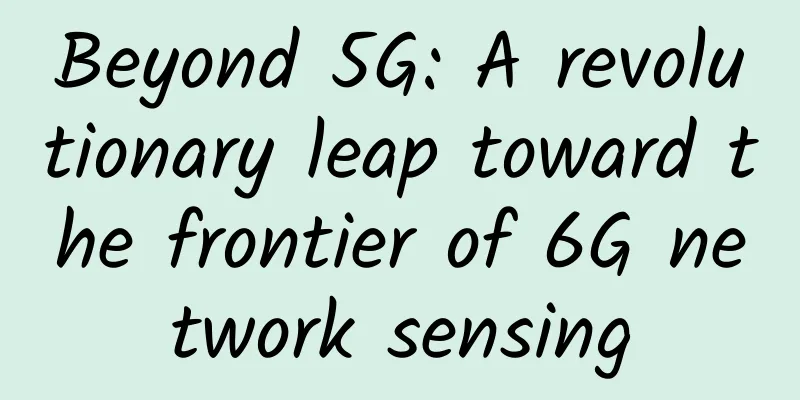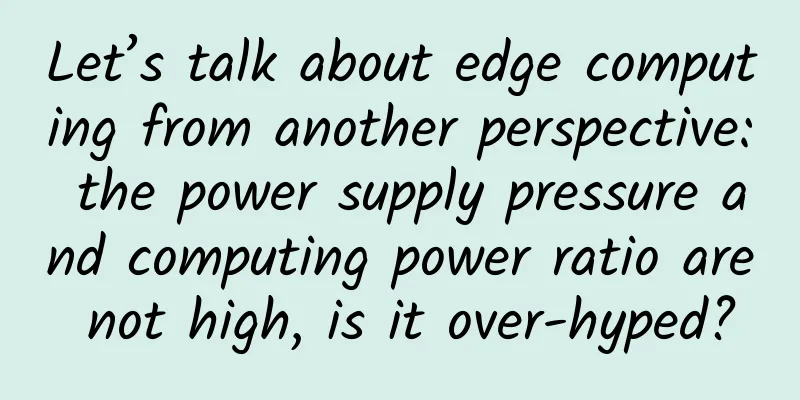Beyond 5G: A revolutionary leap toward the frontier of 6G network sensing

|
In the rapidly evolving world of telecommunications, the rollout of 5G has sparked a paradigm shift, propelling us into an era of faster, more reliable connectivity. However, as users are still absorbing the potential of 5G, it’s clear that the technology, while impressive, is not yet enough to meet the burgeoning demands of networked sensing. 6G technology is now beginning to take off, promising not just incremental improvements but a quantum leap. It holds the key to a future where our interactions with the digital realm will transcend current limitations, offering the tantalizing prospect of a sixth sense that could be perceived as eminently real. At the heart of this technological evolution is 6G’s ability to reshape our understanding of the physical world. Through innovative methods such as signal reflection from objects, 6G strives to expand our awareness beyond the limits of our surroundings. Machines equipped with this technology will have a remarkable ability to sense, interpret, and respond to their environment autonomously. Imagine a world where devices can not only sense things that physically exist, but can also discern nuances of motion, composition, and interaction in a way that reflects human intuition. 6G will redefine the boundaries of connectivity by unlocking new dimensions of networked sensing, delivering capabilities far beyond the scope of current technological wonders. From a practical perspective, the far-reaching impact of 6G network sensing capabilities is reflected in various fields. From positioning and imaging to environmental reconstruction, monitoring, and even gesture and activity recognition, this next-generation connectivity introduces a series of transformative use cases. These applications not only broaden the scope of the technology's practicality, but also bring new performance dimensions such as detection probability, sensing resolution, and accuracy. As we delve deeper into the intricacies of 6G's capabilities, it is clear that we are standing on the brink of a technological revolution, where the seamless integration of simultaneous imaging, mapping, and positioning will redefine how we perceive and interact with our surroundings. High-precision positioning and trackingIn the evolving technology space, 6G will provide machines with high-precision positioning and tracking capabilities, offering a whole new level of independence. This advancement enables robots to calculate their position relative to moving and stationary objects using scattered and reflected wireless signals. Information such as latency, Doppler, and angular spectrum enables robots to navigate to the centimeter level without the need for human-provided coordinates. Applications extend to automated docking and multi-robot collaboration, which is critical for collaborative tasks in various fields such as factories, warehouses, hospitals, and agriculture. Augmenting human senses6G’s ultra-high-resolution imaging brings the ability to make the invisible visible, enhancing the human senses in a safe, precise and low-power way. The technology can detect elements that are not perceptible to the naked eye and can be used in portable or wearable devices, and possibly even implantable devices. Electromagnetic wave penetration enables devices such as smartphones to detect hidden elements such as cables or leaks. The expanded RF range and diverse communication waveforms open up the possibility of sensing and imaging through materials with millimeter-level accuracy. Spectral pattern recognition based on electromagnetic or photonic properties enables unique applications, including calorie counting and environmental analysis. Gesture and activity recognition6G revolutionizes human-computer interaction by introducing device-free gesture and activity recognition through machine learning. Macro recognition focuses on body movements, enabling applications such as patient safety in smart hospitals without compromising privacy. In scenarios such as falls or rehabilitation training, networked monitoring provides a privacy-preserving alternative to traditional camera-based systems. Micro recognition involves gestures, finger movements, and facial expressions, paving the way for users to easily interact with devices through movements. The technology enables creative activities such as playing air piano or painting, and XR technology can transform these movements into real-time music and art. The development of sensing technology driven by 6G is expected to expand human senses to their current limits. From precise mapping to activity recognition, networked sensing reveals the invisible, allowing us to understand and predict previously unknown surroundings. The seamless integration of high-precision positioning, enhanced human senses, and gesture/activity recognition heralds a future in which machines will operate with unprecedented autonomy, transforming every industry and every aspect of our daily lives. |
<<: Ruijie Networks Tailors the Campus Network for Guizhou University of Finance and Economics
Recommend
VULTR: KVM in 25 data centers around the world starting at $2.5 per month (supports hourly billing), $50 for new users
It has been more than 6 months since I last share...
Horizontal comparison of NB-IoT technologies of the three major operators in terms of infrastructure construction, ecosystem construction, application expansion, and tariff competition
In the blink of an eye, we have entered 2018. In ...
Elegantly read http request or response data
There are many ways to read data from http.Reques...
F5 Named a Leader in WAF by Independent Research Firm Forrester Research
F5 Networks (NASDAQ: FFIV) today announced that i...
Halfway through 2021, China Broadcasting and Television 5G begins to accelerate
2021 is already halfway through, and China Radio ...
In 2020, China's network market: routers benefit from new infrastructure, and the Internet industry increases investment in switches
Recently, IDC released the "2020 Network Mar...
Number portability experience report: the process and risks are all revealed
This article has time and regional limitations. T...
The US Department of Defense invested $600 million to militarize 5G, completely subverting the concept of war
The U.S. Department of Defense announced that it ...
AI helps smart cities upgrade, Huawei's "Urban Intelligence" makes cities more vibrant
[51CTO.com original article] In the era of digita...
Have you learned how to build the CC2530 development environment?
1. Introduction to IAR ZigBee Wireless Network No...
Japanese media disclosed: The United States will set up a 5G multilateral fund to contain China
According to a report by Japan's Yomiuri Shim...
Network optimization through automation and modernization
Network infrastructure is expanding to multiple c...
2018 F5 China Application Service Summit Forum was grandly held to share useful coping services in a multi-cloud environment
[51CTO.com original article] At 9:00 am on May 22...
HPE acquires Athonet to expand wireless connectivity leadership
HPE (NYSE: HPE) today announced the acquisition o...
After the fourth retail revolution, three experts from WOT tell you what real smart retail is!
[51CTO.com original article] On June 21, the WOT2...









